Mount Washington
Hello!
Welcome to Mount Washington

Where in Los Angeles can one obtain a veranda view of 100 miles of ocean frontage, 100 miles of rugged mountains, three emerald valleys and several cities? On Mount Washington, where you can live and be immune from dust, mud, smoke, noise, fog and frost! — The Mount Washington Eagle (Advertising insert in Los Angeles Times April 18, 1909)
If you’re visiting Los Angeles for the first time, you might be amazed that its geography is not flat! Los Angeles is instead a slanting basin encircled by the Santa Monica Mountains to the west, the high San Gabriel’s to the north, and the Puente Hills to the east. Within this basin, there are many small hills that break up the whole area into hills and valleys. Mt. Washington, which is 940 feet in height, is located on the eastern edge of downtown Los Angeles and the east shore of the Los Angeles River, running north toward the City of Glendale. Mount Washington is bordered on the north by Eagle Rock, on the east by Highland Park, on the south, southwest, and west by Cypress Park, and on the northwest by Glassell Park. Boundary roads include El Paso Drive, Marmion Way, Division Street, Cypress Avenue, to name a few.
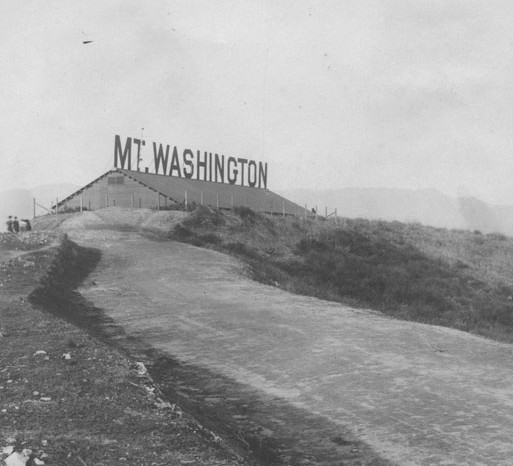
Known for its hilly and windy roads, Mount Washington is sprinkled with parks and rugged hillside spaces, and nearby features include the historic Arroyo Seco channel and the Los Angeles River. Mount Washington is an extremely desirable area due to its proximity to downtown Los Angeles, and perhaps more importantly to its “best-kept secret” philosophy.
When it comes to inclines, Mount Washington’s roads are reminiscent of San Francisco. Take a scenic drive along Eldred Street, between Avenue 50 and Cross Avenue on the northeast side of Mount Washington, with a slope of 33% grade, and one of the three steepest streets in Los Angeles and one of the steepest streets in the world. Make sure your automobile is in, how should I put this, good shape?
Mount Washington Community
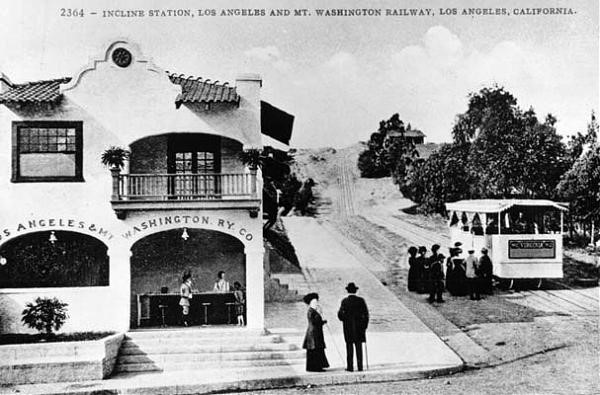
Accounts of Mount Washington’s modern history often begin with Robert Marsh. An early 20th century real estate developer, Marsh conceived of a luxurious hilltop neighborhood, surrounding the Mount Washington Hotel and reached by an incline railway — his gimmick to market and sell hilltop lots. Instantly successful, further development on the Hill preceded in fits and starts, as need for housing and building booms waxed and waned.
Year-by-year and lot-by-lot, today’s community emerged, from the tiny enclave of hillside hunting lodges, retreat cottages to the grand houses surrounding the Hotel. To truly understand Mount Washington though, one needs to dig deeper, not just through real estate records, but back through time.
Throughout the 20th century Mount Washington’s built environment ranged from early hunting lodges and humble cottages to elegant, permanent residences designed by renowned architects. Significant construction did not start until after the Los Angeles land boom of the 1880’s. This was largely due to the difficulty of building on steep hillsides and the lack of roads for access. Mount Washington was a large undivided tract of land awaiting transition from early grazing on the Rancho San Rafael to a dramatic hillside enclave.
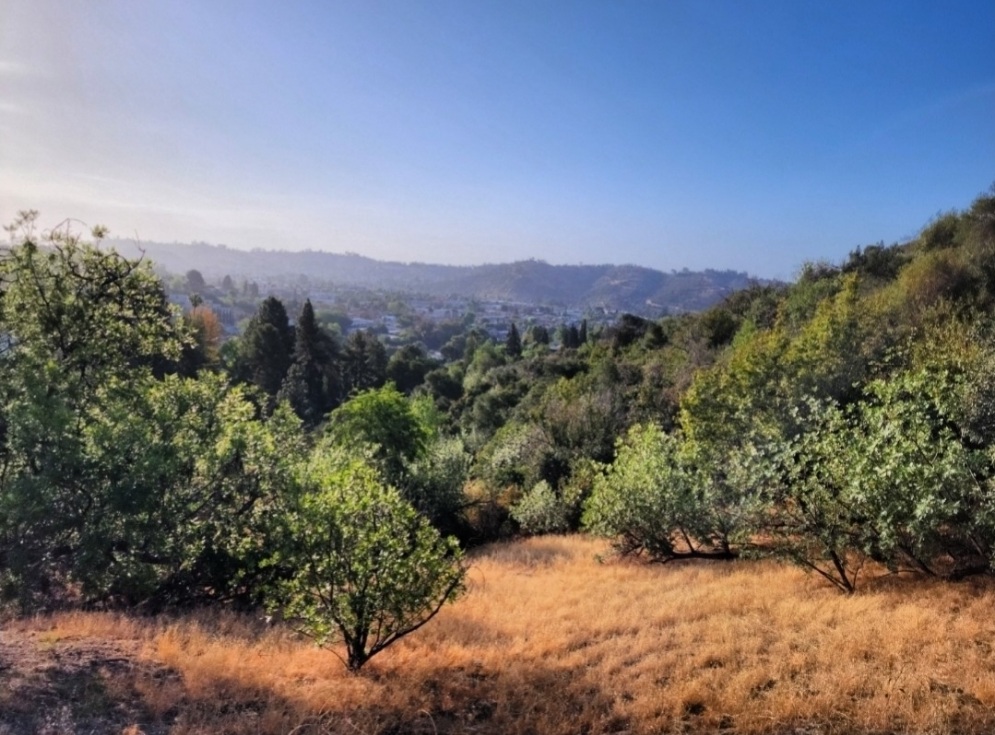
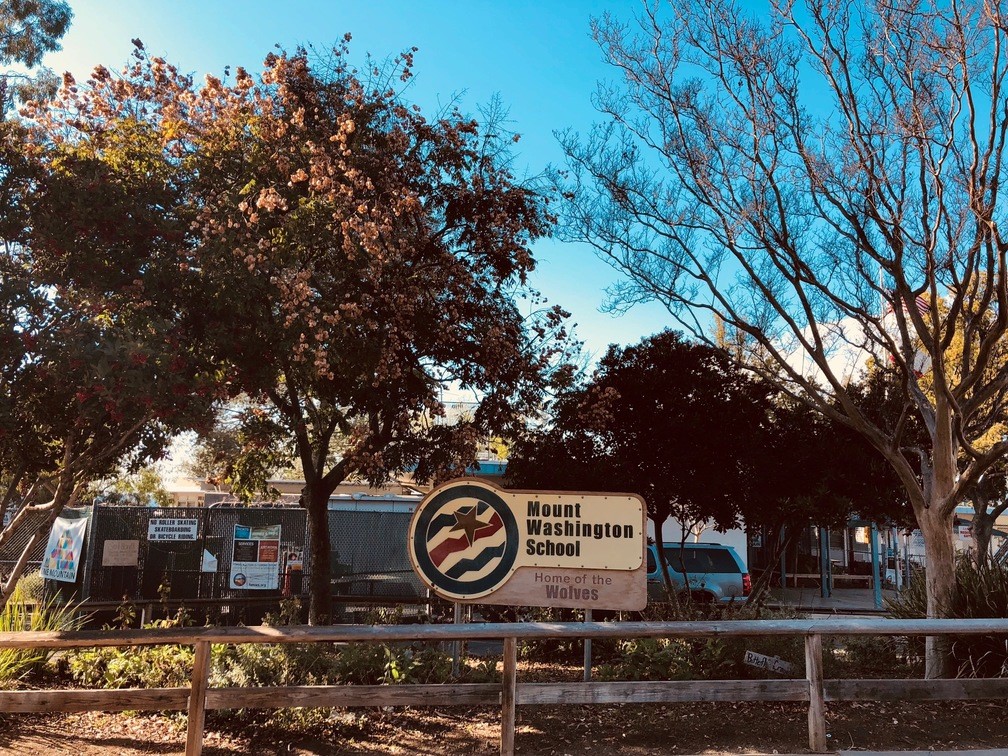
In recent years, many homebuyers have become attracted to the area as a relatively affordable alternative to the west side of the city. The district is generally considered the most affluent area of the east side, and also contains the region’s largest concentration of non-Latino whites (though not as affluent as the neighboring cities of South Pasadena, San Marino, and southwest Pasadena)
There is only one school within the neighborhood — Mount Washington Elementary School — which is part of the Los Angeles Unified School District and is considered an above-average center for children where scores are among the top schools in Los Angeles on the Academic Performance Index. This isn’t a surprise with the community being tight-knit.
Schools in and around Mount Washington from GreatSchools.org
Find your local public or charter school with the LAUSD Resident School Identifier
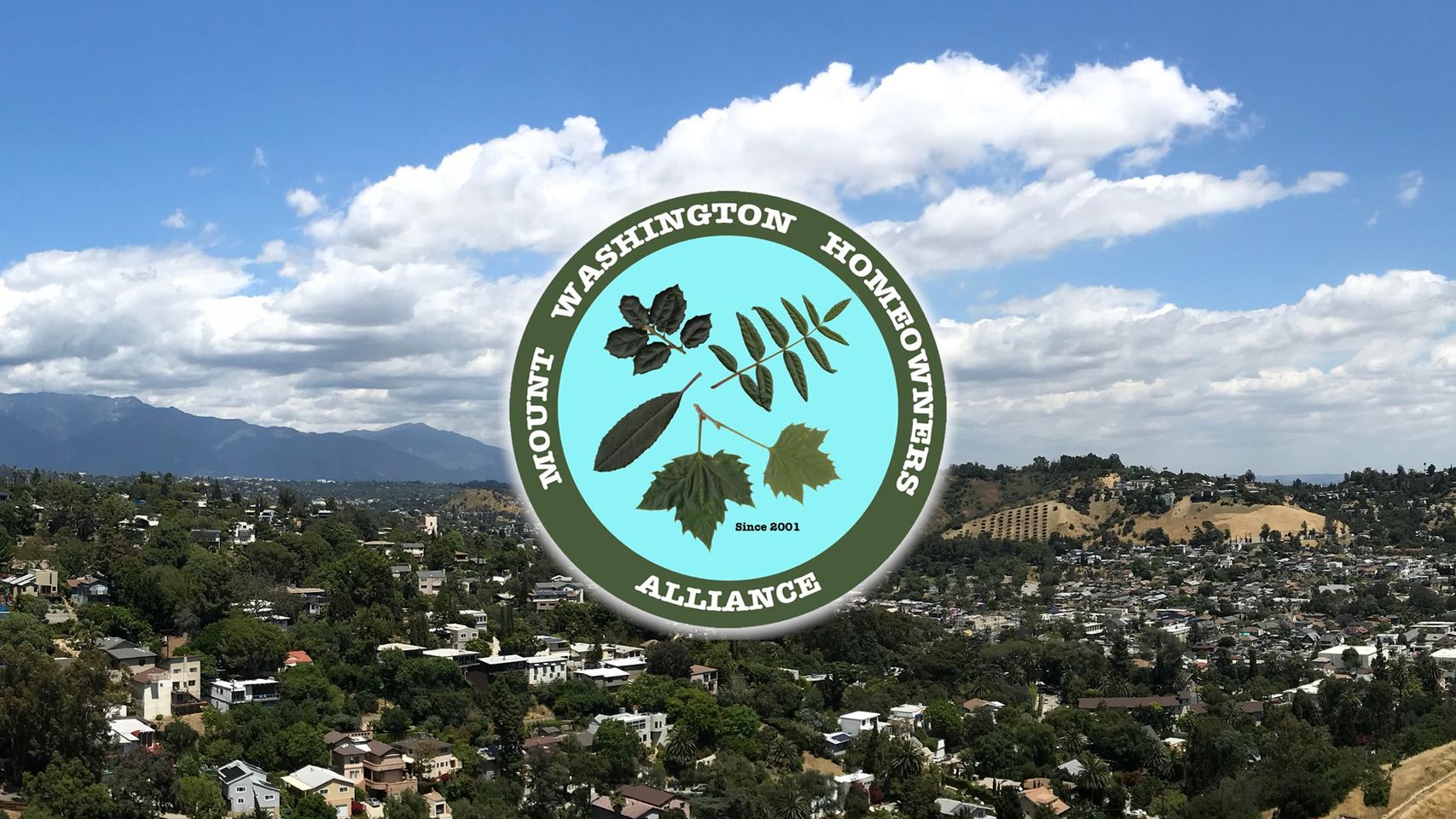
The Mount Washington Homeowners Alliance (“MWHA”) is a voluntary homeowners association that seeks to protect, enhance, and improve the quality of life in Mount Washington and to support its partner communities of Glassell Park, Highland Park, Cypress Park and Sycamore Terrace.
While voting membership in the Alliance is reserved to homeowners within the Mount Washington boundaries, other community residents are also encouraged to join in order to keep aware of community activities and participate in Alliance projects.
The MWHA is committed to responsible development of the hillsides, in accordance with the Mount Washington/Glassell Park Specific Plan of the City of Los Angeles, development that preserves the unique architecture and community life of the neighborhood while also preserving high quality natural habitat and open space.
Mount Washington HomeOwners Alliance
Mount Washington Art and Shopping
Residents and merchants alike, pride themselves in the peace and quiet that has historically shaped this neighborhood. There is a small-town atmosphere, yet with new edgy and culturally conscious dwellers. The adjacent communities of Eagle Rock and Highland Park are just a stone’s throw away for edgier amusements.
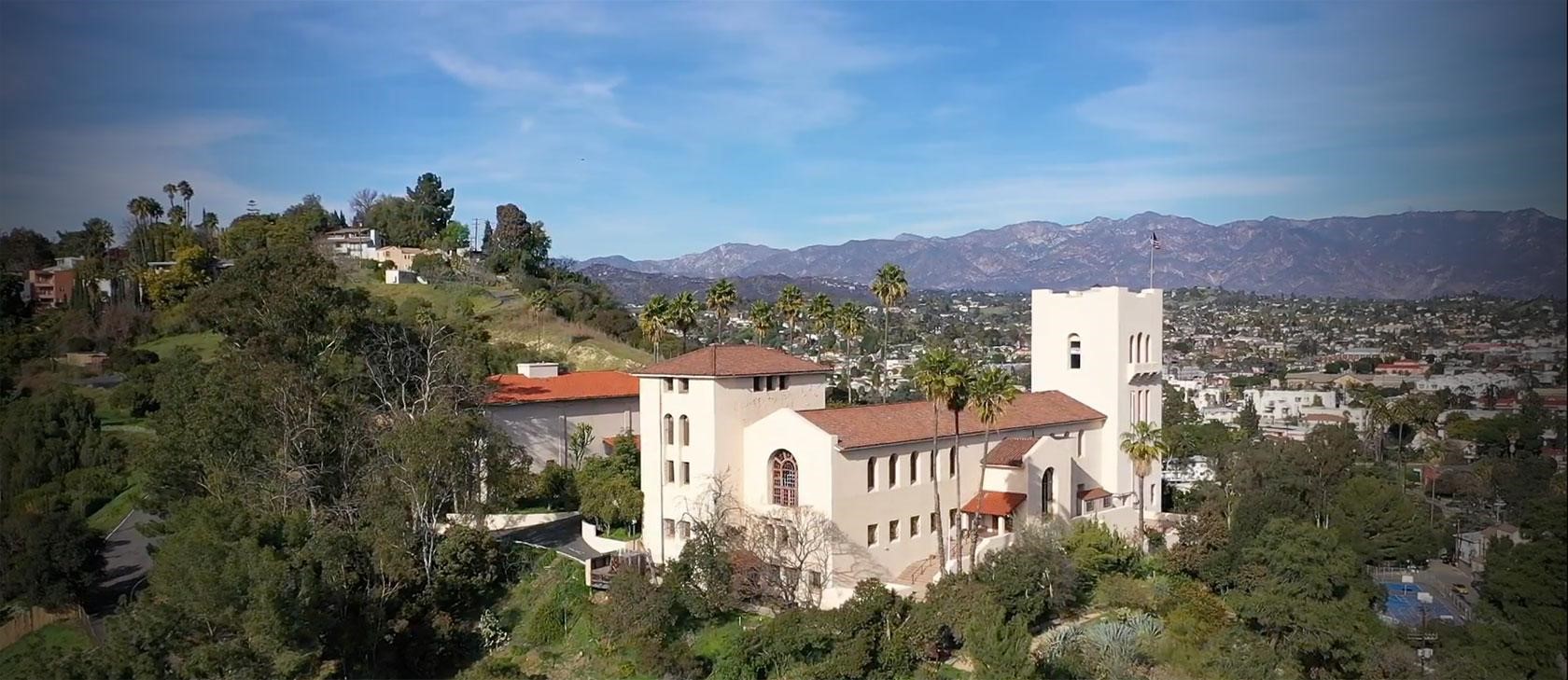
Still, a day of exploration in Mount Washington might lead you to the Southwest Museum of the American Indians which is located here and includes a library, archives, and an extensive collection of pre-Hispanic, Spanish colonial, Latino, and Western American art and artifacts. Situated on beautiful spacious grounds, the historic Hunt and Burns designed building gives you a glimpse into early life in these Great Plains. The historic trolley might not be around any longer, but modern-day Metro rail can take you directly there.
Sea View is a contemporary art gallery founded by Sara Lee Hantman at the top of the historic Mount Washington neighborhood in Los Angeles.
Built by Jorge Pardo as a “social sculpture” in the late nineties, the concept space originally functioned as the artist’s home studio as well as an off site exhibition on view for five weeks by MOCA in 1998.
Twenty five years later, Sea View picks up where this interdisciplinary, artist-first endeavor left off – inviting guests to explore a similar juncture where art, design, and architecture meet. Named after its wide hilltop street and sloped vantage, where one can see as far back as the Pacific Ocean on a clear day, the gallery is dedicated to fostering a transhistorical dialogue between artists and designers within an intimate context.
Jorge Pardo’s house at 4166 Sea View Lane in Mount Washington has a view across the Hollywood Hills all the way to the Pacific Ocean, and it gets the sea breeze from noon to six. Conspicuously, however, the house has no front door, which is pretty much what you’d expect of a nearly 3,000-square-foot house that is also a work of art. This is not to say that there’s anything perverse or precious or theatrical or contrived about this brand-new, flat-roofed, redwood-clad, single-story structure. It is merely to note that the house Pardo built—and that Los Angeles’s MoCA is showcasing this fall, before the artist takes up permanent residence there—is marked by an uncommon self-consciousness: it asks how, and to what end, a work of art makes itself visible as such.
Located on the southwestern slopes of Mount Washington, Elyria Canyon Park is a 35-acre nature park that provides a glimpse into the native habitat that once thrived in the hills near downtown Los Angeles. A network of trails meanders through fragrant communities of coastal sage scrub, chaparral, grassland, and purple needlegrass.
The park boasts one of the finest examples of California black walnut woodland in Southern California. The trails lead to vistas of the Los Angeles River, Griffith Observatory, and the city. With the rugged individualism and early industrious nature of those who developed the residential real estate of Mt. Washington, there is a vast artistic and creative realm in this region. Up here, architecture and its immersion in nature reign king! And the views!!!
The one-story home with sweeping views of the San Gabriel Mountains was designed in 1958 by architect William Earl Wear for the Jings.
The property’s Mid-Century Modern elements include a flat roof with wide overhanging eaves, full-height windows, unornamented surfaces and intersecting geometric volumes. It also features characteristics that connect it to the outdoors, as well as built-in furniture and cabinetry, an open floor plan and horizontal massing. Other characteristic features include its connection to the outdoors, built-in furniture and cabinetry, an open plan and horizontal massing.
“In Wear’s final design, he incorporated all of the elements of Frank Lloyd Wright’s organic architecture, but in a manner that was new and unique to California,” Paca told commissioners.
LOS ANGELES — The Los Angeles Cultural Heritage Commission on Thursday unanimously recommended that a mid-century modern home in Mount Washington be placed on the Historic-Cultural Monument List.
The Dr. Fong Q. and Lorraine Jing residence’s mid-century modern architectural style with Early Modern influences qualified the house for the list under the criteria that a property “embodies the distinctive characteristics of a style, type, period or method of construction.”
While the nomination was considered for its architectural value, the Department of City Planning’s recommendation report also noted its history, as well, as the Jing family built the home in the Mount Washington neighborhood because racial covenants and discrimination prevented them from purchasing homes in Glendale and Burbank, closer to the hospital where Jing worked as a radiologist, as well as many L.A. city neighborhoods.
“Dr. Fong and Lorraine Jing were a mixed-race couple. Both born in the United States, both American citizens. He was born to Chinese immigrant parents in California … However, after they married, it was illegal in most areas of Los Angeles for them to purchase a home,” said Virginia Paca, who filed the Historic-Cultural Monument application for the property.
“The Jings did not give up their search for a house. They decided to buy a piece of property and build a house because no one else would sell them one.”
ITS ALL ABOUT LOCATION
Mount Washington Real Estate
Mount Washington Real Estate houses noteworthy architecture, both vintage and modern, including Wright-inspired architecture, the new modern, and everything in between.
One could argue that the California Craftsman ruled the hills as this is the style in which many of the early 1900 homes were designed in. Mt. Washington’s residential architectural roots began with Victorian farmhouses, grand estates, and charming Craftsman homes.
In the 1920s, modern homes included Spanish colonial revival, English Tudor, and smaller bungalows. In later decades, streamlined modern was introduced, International, post-war traditional, and mid-century modern. Mt. Washington’s eclectic mix of architectural character among these diverse styles of homes has made it both unique and fascinating.
The Mauer House is Los Angeles Historic Cultural Monument #481. Built in 1947 this John Lautner-designed house featured prefabricated column and beam elements which were installed by a subcontractor to reduce costs. The Mauers were their own general contractor. Lautner worked for Frank Lloyd Wright in the first class of Taliesin Fellows at Spring Green WI. Lautner supervised Fallingwater in Pennsylvania and the Johnson Wax Building in Wisconsin.
Lautner did not receive his architectural license until 1952. He considered his clients “either rich bastards or poor geniuses,” according to stepdaughter, Elizabeth Honnold Harris. Known for his houses, Lautner was also well-known for Googie design, distinctive for its expansive glass walls, arresting form, and exuberant signage oriented to automobiles. Googie became a fixture in 1950s America but was regularly ridiculed by the architectural community.
Lautner’s reputation suffered, despite the fact his innovative designs were as good as ever. Following some lean years, he rose again in the 1960s with the Chemosphere House in LA and poured-concrete houses like the Elrod and Hope houses in Palm Springs.
Architects Archibald Quincy Jones, Gregory Ain, and John Lautner all have created residences in Mt. Washington! One of the lesser-known is Canadian-born architect W. Earl Wear who moved to Southern California in the 1950s.
Born in Pittsburgh PA, Ain was raised in the Lincoln Heights neighborhood of Los Angeles CA. For a short time during childhood, the Ain family lived at Llano del Rio, an experimental collective farming colony in the Antelope Valley of California. He was inspired to become an architect after visiting the Rudolf Schindler House as a teenager.
He attended the University of Southern California School of Architecture in 1927-1928 but dropped out after feeling limited by Beaux Arts training. Ain’s primary influences were Rudolf Schindler and Richard Neutra. He lived in Neutra’s then-new VDL Research House for a while and worked for Neutra from 1930 to 1935. He also worked for Harwell Hamilton Harris.
The Albert E. Byler house is located near the top of Mt. Washington, with a view towards downtown Los Angeles. The house is small, measuring less than five hundred square feet, with only a main room, kitchen, and bathroom. The exterior was clad in Douglas fir, and the interior walls were redwood. A wood trellis highlighted the wood theme on the outside as well.
Archibald Quincy Jones, FAIA (1913 – 1979) was instrumental in bringing a casual, outdoor-oriented modernism to middle-class California in the postwar years. A few years after opening his firm, Jones in partnership with Whitney R. Smith, formed the Mutual Housing Association, an arrangement that would be responsible for many, iconic home designs, most of which are located in the famous Mid Century marvel tract house development of Crestwood Hills in Brentwood, California. Before embarking on any large-scale projects the team decided to design and build a ‘test house’ to try out new designs, engineering, and construction techniques.
Their goal was to deconstruct staid ways of thinking about space and to create open, energetic homes that were both well designed as well as practical and livable. This house, completed in 1948, would become known as The Pilot House. Located in Mt. Washington just north of Los Angeles the home is a long and linear plan situated on a steep plot. Its famous angled windows affords incredible views of the surrounding hills, and with patios on three sides and a large and well-hidden pool, the home is a perfect, secluded oasis.
The Pilot House for many is the birth of Mid Century Modern American architecture and demonstrates quite beautifully that modern can be warm, inviting, and quite livable. An icon almost from the day it was built in 1948 the Pilot House was designated a city monument in 2002.
KAP Studios is a custom architecture firm that creates exceptional residential, commercial and multi-use spaces through a collaborative, bespoke process. They strike the balance between form and artistry, buildability and beauty. “Good design can only be judged by how a building will function, and the role it plays within the larger context, while considering density and sustainability at the same time as beauty, practicality and efficiency.”
Recently a residence was completed for two private clients perched on a hillside in the Mount Washington neighborhood of Los Angeles. The site is one continuous slope from top to bottom. The design makes the most of this dramatic terrain by building the house off a deck that floats above the slope. This strategy keeps excavation, retaining walls, and ground work to a minimum. One of the main goals of the project is to keep disturbance to the site’s natural features and biology to a minimum, which is achieved by this construction method.
Mount Washington is a tightly knit community with a specific plan that sets out strict design guidelines whose intent is to preserve the neighborhood’s local characteristics and variation in building design. Our house design has been commended by the planner responsible for Mount Washington, citing it’s sensitive approach to the existing terrain and it’s considered design.
The home consists of a main residence, an accessory structure that will function as a home office, a sun room that connects the two, an expansive outdoor dining deck, and full length infinity pool along the entire edge of the house. A four car garage sits below the house at the driveway level.
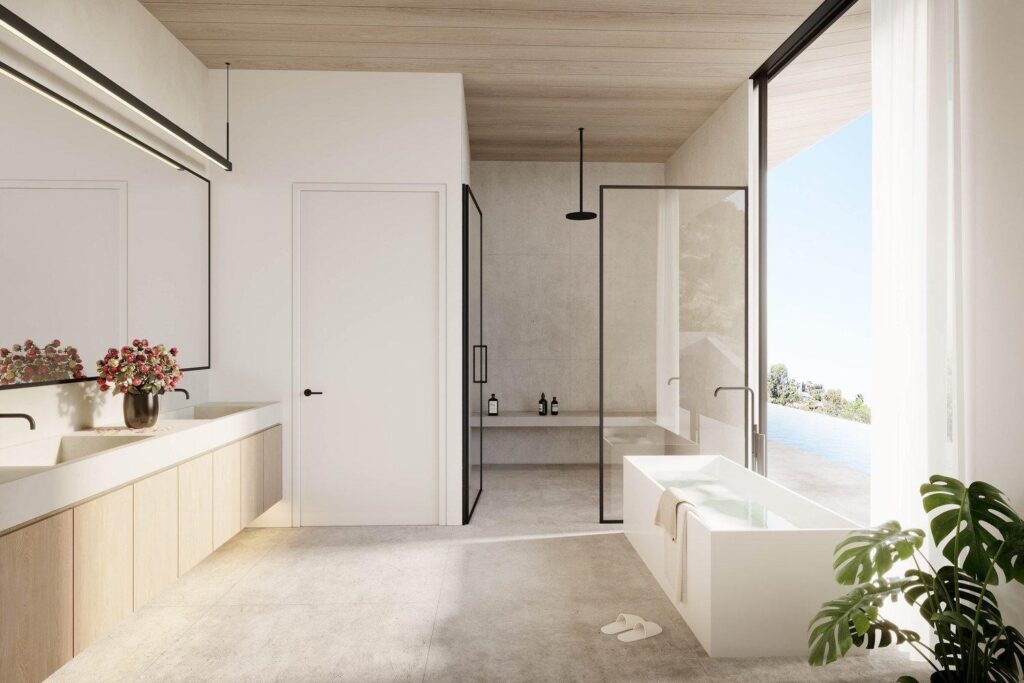
A rich palette of wood lined ceilings and floors, concrete, and black cladding brings sophistication and elegance to the design. The corners of the living room and master bedroom have floor to ceiling sliding doors that can be completely opened, allowing for the beautiful sunset over the hillside to be enjoyed throughout the house.
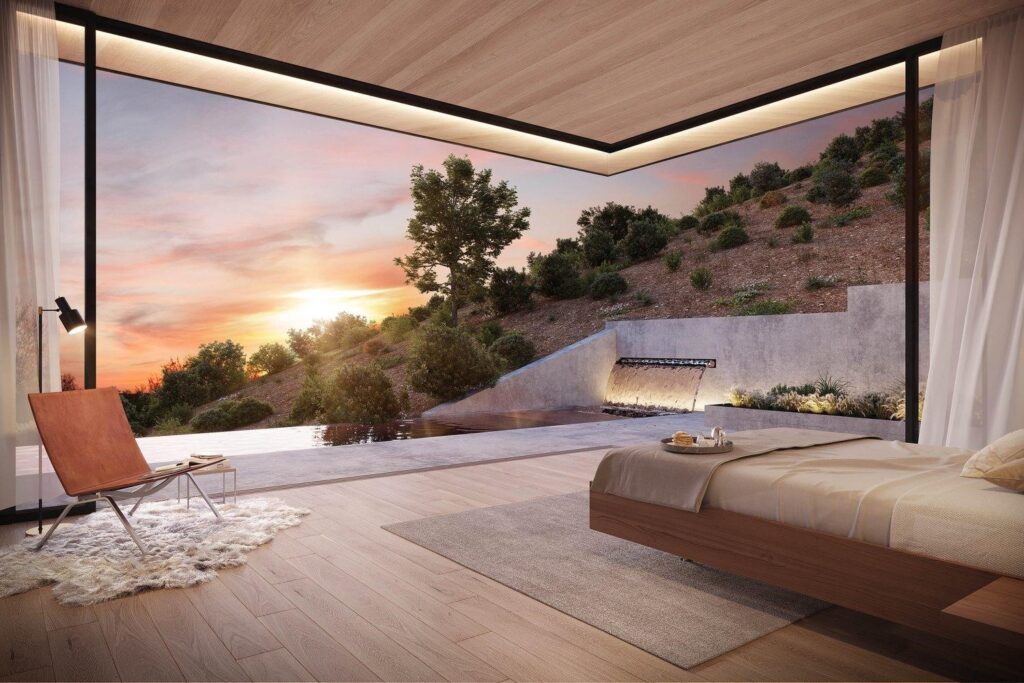
The median sales price for single-family homes sold in the 90065 ZIP Code from September 2022 to September 2023 is $1,282,500. The lowest-priced home ranged from $445,000 to $3mil, with a medium average of $826 per sq ft sold. Of the 102 listings sold, the average time on the market was 31 days with the medium days being 15.
Mount Washington Eateries & Nightlife
Mount Washington is not known for its nightlife, but rather its steep streets and sweeping vistas that span from the Pacific Ocean to the San Gabriel Mountains and beyond. Although the neighborhood’s steep and curving streets prevent it from claiming major thoroughfares of its own, some local shops and quick snack establishments are making their homes closer to Mount Washington. Small artisanal shops featuring local artwork and organic eats have started popping up in the last few years as well along its borders.
Mount Washington Architecture and Real Estate
Mount Washington Real Estate houses noteworthy architecture, both vintage and modern, including Wright-inspired architecture, Lautner, and Van Horne.
One could argue that the California Craftsman ruled the hills as this is the style in which many of the early 1900 homes were designed in. By the 1950s and 1960s, a more modern aesthetic was being introduced, bringing streamlined walls, clean ample structures and contemporary treatments provided a new contrast to the older craftsman era.
When it comes to inclines, Mount Washington’s roads are reminiscent of San Francisco. Take a scenic drive along Eldred Street, between Avenue 50 and Cross Avenue on the northeast side of Mount Washington, with a slope of 33% grade, and one of the three steepest streets in Los Angeles and one of the steepest streets in the world. Make sure your automobile is in, how should I put this, good shape.
Mount Washington Historical Fun Facts
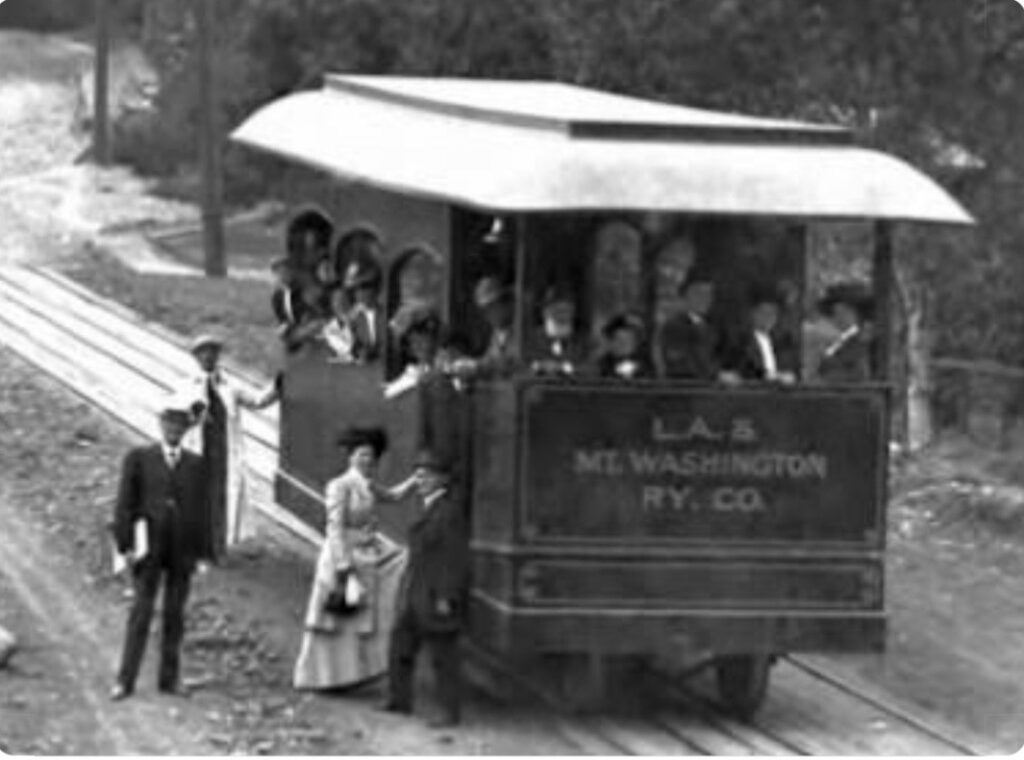
Although the city of Los Angeles was founded as a Spanish pueblo in 1781, it did not grow much until 1860. By 1870 there was a diffusion of homes out toward the Westlake District and on the east side of the Los Angeles River to Eastlake and Boyle Heights. The rich built south toward Agricultural Park (Exposition Park). Panoramic views were not a consideration in those days, and only the bases of the hillsides were dotted with residences.
Most of the hills of the Los Angeles basin were sparsely settled, mostly due to the initial lack of accessibility. Mount Washington was no exception. Originally, the hill was once a part of the huge and sprawling Rancho San Rafael, and its only residents were some 15,000 sheep! Once public transportation was established in the area, the Highlands, now known as Highland Park, blossomed into one of Los Angeles’ first streetcar suburban developments of the early 1900s.
The turning point for Mt. Washington came in 1909, long after the land boom of the 1880s, with the construction of a hotel on the summit and an incline railway by which to reach the hotel and subdivision. The hotel took full advantage of the panoramic view from the summit. It was the hope of the developer that people would ride from downtown on the Los Angeles Railway, get off the trolley at Avenue 43 and Marmion Way, and ride the Los Angeles & Mt. Washington Incline Railway to the summit, where they would experience the breathtaking view, whether day or night, resulting in the purchase of a lot. The ploy worked; Mount Washington, CA became an exclusive and highly desirable hilltop residential site for those who wished to experience a special situation. Visitors came from all over the region, and at one point the Mt. Washington Hotel became a gathering spot for celebrities such as Charles Chaplin, who always stayed at the hotel while making a film at Sycamore Grove studios, in adjacent Highland Park.
The evolution of the movie industry to its current location in Hollywood shifted much of the attraction of Mount Washington and the hotel and the area became less of an attraction. In 1925 the vacant hotel was sold to Parmahansa Yogananda, a monk of the ancient Swami Order in India, and founder of the Self-Realization Fellowship, which is still housed there today. Luckily, today the Mt. Washington Hotel exists as it did in the past, the grounds and gardens are well maintained and visitors are welcome! The tennis courts are in the same location, and the homes on the summit are as stately as when built over three-quarters of a century ago.
By the late 2000s, the neighborhood attracted middle- and upper-income residents, mostly whites, Latinos, and Asians.
Originally constructed in 1910 as the Mount Washington Hotel, its intention was to highlight an exclusive residential subdivision promoted by real estate developer Robert Marsh. Served by a cable railway. The hotel was a popular spot frequented by silent film stars like Charlie Chaplin. As the film studios moved out of Sycamore Grove Park on their way to Hollywood, the popularity waned, and the building stood vacant. Mt. Washington’s growth and its unique neighborhoods developed and thrived and today continue with that same artistic and visionary spirit.

The turning point for Mt. Washington came in 1909, long after the land boom of the 1880s, with the construction of a hotel on the summit and an incline railway by which to reach the hotel and subdivision. The hotel took full advantage of the panoramic view from the summit. It was the hope of the developer that people would ride from downtown on the Los Angeles Railway, get off the trolley at Avenue 43 and Marmion Way, and ride the Los Angeles & Mt. Washington Incline Railway to the summit, where they would experience the breathtaking view, whether day or night, resulting in the purchase of a lot. The ploy worked; Mount Washington, CA became an exclusive and highly desirable hilltop residential site for those who wished to experience a special situation. Visitors came from all over the region, and at one point the Mt. Washington Hotel became a gathering spot for celebrities such as Charles Chaplin, who always stayed at the hotel while making a film at Sycamore Grove studios, in adjacent Highland Park.
The evolution of the movie industry to its current location in Hollywood shifted much of the attraction of Mount Washington and the hotel and the area became less of an attraction. In 1925 the vacant hotel was sold to Parmahansa Yogananda, a monk of the ancient Swami Order in India, and founder of the Self-Realization Fellowship, which is still housed there today. Luckily, today Mt. Washington Hotel exists as it did in the past, the grounds and gardens are well maintained and visitors are welcome! The tennis courts are in the same location, and the homes on the summit are as stately as when built over three-quarters of a century ago.
How did Mount Washington get its name?
“The answer is not without some uncertainty. One might think it was named for George Washington as are several mountains throughout the county. However, Donald Duke, a historian who wrote extensively about Los Angeles and Mt. Washington Railway Co., says the best bet is that the Hill is named for Colonel Henry Washington who came to Southern California in 1852 to set survey baselines of the area including the Los Angeles River and portions of Los Angeles and Riverside counties. So, ironically, Mount Washington may be named for the man who conducted the first land surveys that led to the Hill’s development.”
Is Mount Washington Safe?
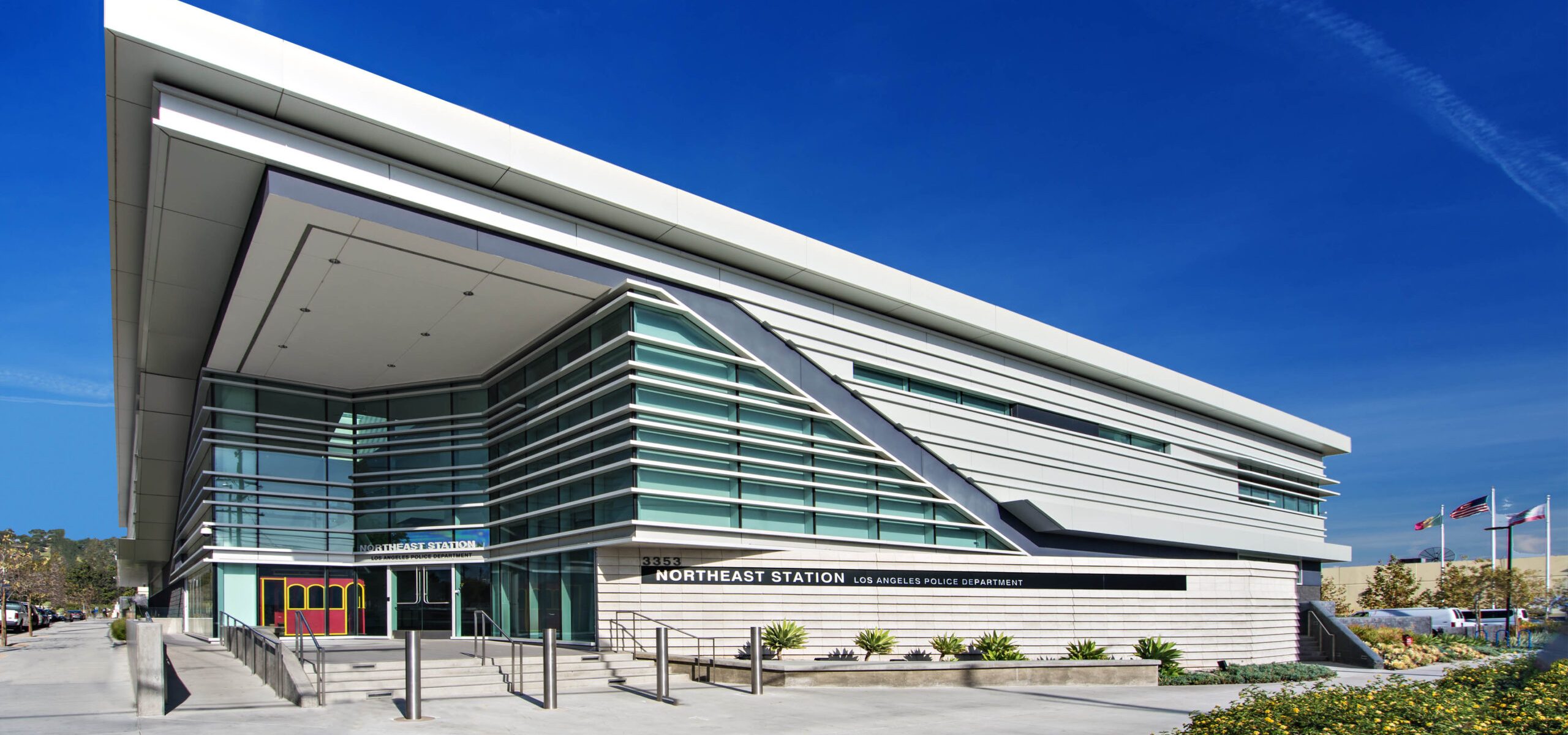
Every metropolitan city with high density carries with it the increase for crime based on the increased population sample. As a whole Mount Washington is safe and here are the numbers!
Crime Rates in Mount Washington
Mount Washington in terms of crime rate in Los Angeles is one of the safest cities to live in with only 344 total crimes being committed to every 100,000, according to The University of Southern California’s Crosstown project whose data comes from the two largest agencies, the Los Angeles Police Department and the Los Angeles County Sheriff’s Department.
Every metropolitan city with high density carries with it the increase for crime based on the increased population sample.” We, humans, have a hard time comparing things unless we are assisted. And when we don’t have that assistance, we can go to extremes. What is the typical experience? What are the extremes? Of the 88 cities in Los Angeles County 52 of the LA neighborhood’s have a property crime rate between 16-25 people per 1000 residents. The lowest being 9 and the highest being 167. Only 12 of the 88 cities in Los Angeles County have a violent crime rate of 11-15 people per 1000 residents. The lowest being 1 and the highest being 45.
Crime Statistics and Types in Mount Washington
For a more comprehensive look take a look at the Los Angeles Police Department Crime Mapping site. You can get up-to-date crime statistics for neighborhoods throughout Los Angeles. There were 9 accounts of burglary / theft in August and 5 assaults with no homicides.
Homeless Population in Mount Washington
According to the Los Angeles Homeless Services Authority LAHSA as of 2022 13 individuals constituted the entire homeless population of Mount Washington’s 12,728 population in 2000.
In the Service Planning Area Metro 4 where Mount Washington resides there were 114 individuals that were homeless and or in vehicles based on the data collected from Los Angeles Homeless Services Authority in 2022. Other major areas such as South L.A (SPA 6) has 14,598 the San Fernando Valley (SPA 2) 9,829 and the lowest region is the Antelope Valley with 4,598. The range falls between the highest being the South Los Angeles Service Area at 1.38% and the lowest being the San Gabriel Valley at .28%. Echo Park / Service Planning area 4 is at 1.23%.
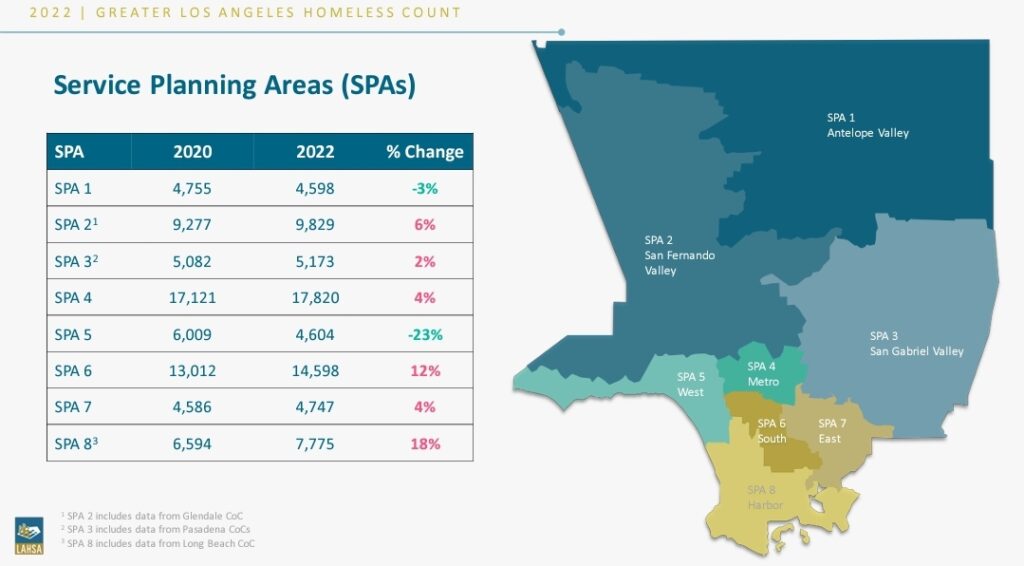
Homelessness and Housing Challenges
It’s impossible to discuss crime in Los Angeles without considering the city’s massive unhoused population, which by some measurements is the largest in the nation.
The greater Los Angeles homeless Service Planning Areas (SPA’s) are broken up between eight different regions each with unique challenges to address compassionately and effectively based on the numbers of human beings that they serve. Rehousing L.A is at the forefront of active solutions leading to change. The people on the frontlines of Rehousing L.A’s rehousing system made more than 84,000 housing placements in the past five years. L.A. County is increasing coordination among mainstream systems–foster care, hospitals, jails and prisons–to better prevent homelessness. The focus being on emergency shelter to better rehouse people long term. This fall, we will roll out shared success measures and goals to hold our rehousing system accountable and increase coordination. Our 88 city governments must focus on increasing affordable housing. Each year, more than 21,000 people get rehoused, but more than 80,000 people become homeless. L.A County has increased prevention efforts in our mainstream systems and increasing affordable housing. Since COVID-19, health authorities recommended against moving encampments, resulting in 17% more visible tents, vehicles, and makeshift shelters–with fewer people in them. Since the count, there’s been a record number of actions to help move people inside. (LAHSA)
Neighborhood Council and Community Engagement
The Echo Park Neighborhood Council is a publicly funded and elected group of individuals who live, work, own property, or otherwise have a connection to Echo Park. They address issues and engage in initiatives affecting the neighborhood as a whole, as well as in each of its six districts. The EPNC connects residents on a local level with their city government and aims to address issues of safety, development, and quality of life with those who live and work around us.
The Echo Park Neighborhood Council’s Homelessness & Housing Committee (HHC) mission statement is “The EPNC Homelessness & Housing Committee seeks to implement ideas that will benefit our unhoused residents. HHC strives to connect those experiencing homelessness or housing insecurity to resources and to advocate for the effective use of government programs to help address our housing crisis.” They have board members and meet the 1st Tuesday of the month at 7pm.
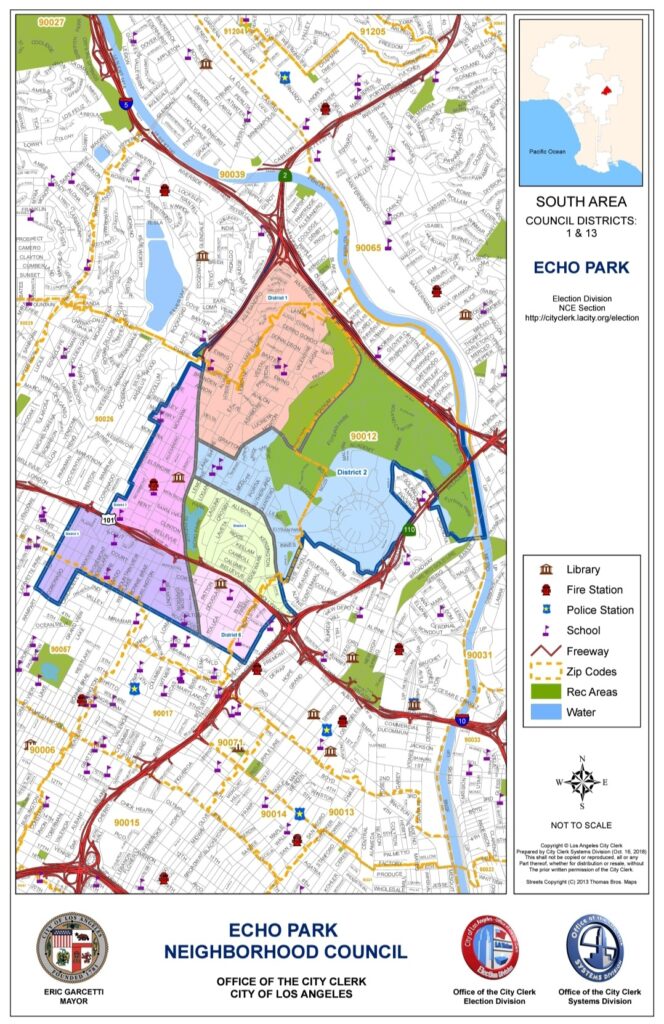
Neighborhood Watch and Crime Prevention
To keep an eye on things in your neighborhood the more modern neighborhood watch is Crime Stoppers. This site is where you can submit a tip, follow up, and collect a cash reward! “The purpose of Los Angeles Regional Crime Stoppers is to prevent and reduce crime, by forming a partnership among the community, law enforcement and the media to offer anonymity and cash rewards to anyone providing information leading to an arrest. Crime Stoppers encourages members of the community to assist local law enforcement agencies in the fight against crime by overcoming the two key elements that inhibit community involvement: fear and apathy.” (Crime Stoppers)
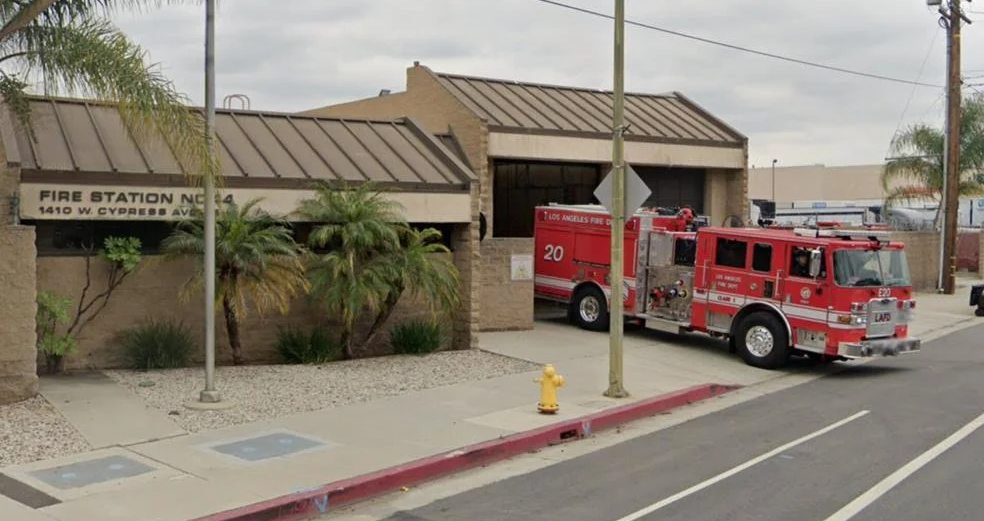
Local Resources:
Northeast Community Police Station – Mount Washington
- Phone (Voice): 323-561-3211
- Phone (TTY): 877-275-5273
- Address: 3353 San Fernando Rd., Los Angeles, CA 90065
Staff Contact:
Andrea Magana-Withers
(213) 978-1285
andrea.maganawithers@lacity.org
Pablo Estrada
(818) 374-5033
pablo.estrada@lacity.org
Community Plan Area(s):
Council District 1 runs through core parts of northeast and northwest Los Angeles, covering a diverse range of neighborhoods throughout Los Angeles.
It includes all or parts of 22 L.A. neighborhoods, including: Glassell Park, Cypress Park, Highland Park, Mount Washington, Sycamore Grove, Solano Canyon. Elysian Park, Echo Park, Westlake, Angelino Heights, Temple Beaudry, Chinatown, Forgotten Edge, Lincoln Heights, Montecito Heights, Pico Union, Adams-Normandie, University Park, Victory Heights, Koreatown, Mid Cities, MacArthur Park.
To see whether you live in District 1, check out the map below, or reach out to our office at Councilmember.Hernandez@lacity.org
Los Angeles Fire Department Station 42 Mount Washington
- Phone: 213-485-6220
- Address: 2144 W. Sunset Blvd., Los Angeles, CA 90026
Mount Washington Neighborhood Council
Email: info@mwcc.org
Health Services of Los Angeles County
Phone: 211
Services: Primary care, emergency services for insured, uninsured, low-income, no income
211 County Help Line
For emergency food/shelter, dial 211 and choose option 3
Emergency Senior Meals Response
Phone: 213-202-5669
Services: Meals for seniors 60+
Los Angeles County Domestic Violence Safety Plan Hotline
Phone: 800-799-7233
Your Next Chapter Starts Here
Senior Guide
Our golden years bring lots of changes.
It’s important to consider the people you invite to be on your support team. Part of that team is a Senior Real Estate Specialist® (SRES®) by your side.
THE SHELHAMER GROUP | DRE: 01950995
Glenn Shelhamer is a licensed real estate broker DRE: 01950995 in the state of California and abides by equal housing opportunity laws. All material presented herein is intended for informational purposes only. Information is compiled from sources deemed reliable but subject to errors, omissions, changes in price, condition, sale, or withdrawal without notice. To reach The Shelhamer Real Estate Group’s office manage please call (310) 913-9477.
© 2023 Shelhamer Group. All rights reserved.

